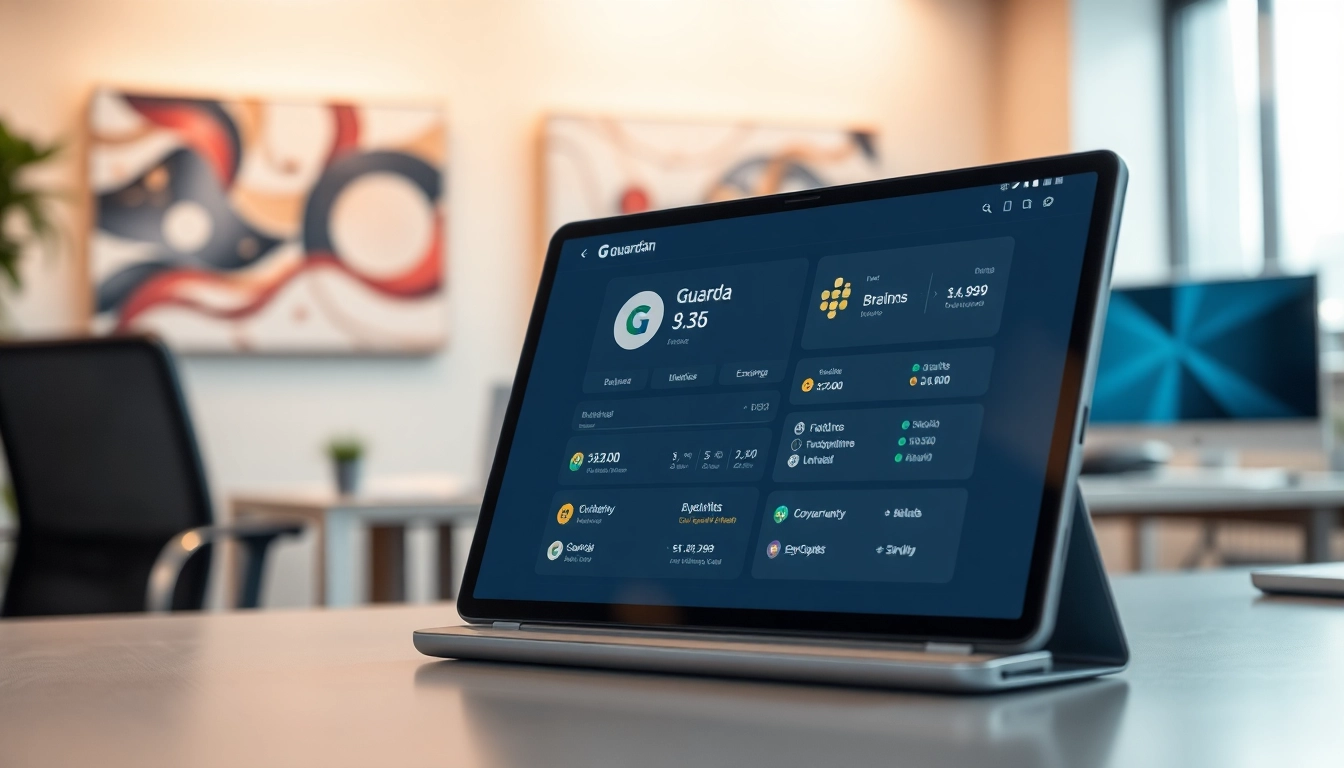Understanding BTC Live Price
As a cornerstone of the cryptocurrency market, Bitcoin (BTC) attracts immense attention from investors worldwide. Its price is not merely a number but a reflection of multiple economic indicators, market sentiments, and investor behavior. Staying updated with the btc live price helps traders and investors make informed decisions in this volatile landscape.
What Influences the BTC Live Price?
The live price of Bitcoin is influenced by a myriad of factors. These can be broadly categorized into market demand and supply dynamics, regulatory news, global economic conditions, and market sentiment.
Market Demand and Supply Dynamics
The fundamental economic principle of supply and demand plays a pivotal role in determining Bitcoin’s live price. As more investors buy Bitcoin, the price tends to rise. Conversely, if many investors sell BTC, the price tends to dip. Given that Bitcoin has a capped supply of 21 million coins, scarcity can also propel its value in times of increased demand.
Regulatory News
Announcements regarding regulations or government policies impacting cryptocurrencies can have a significant effect on Bitcoin’s price. For example, favorable regulations may boost investor confidence and increase price, while harsh regulations can lead to price drops.
Global Economic Conditions
Global economic situation also affects Bitcoin pricing. Economic conditions like inflation, currency devaluation, and geopolitical instability can lead investors to Bitcoin as a hedge against traditional finance. These scenarios create spikes in the live price of BTC, influenced by its perceived safe-haven status.
Reading Bitcoin Price Charts Effectively
Understanding Bitcoin price charts is crucial for anyone involved in cryptocurrency trading. Price charts display historical data, which can be analyzed to predict future movements through patterns and trends.
Candlestick Charts
Candlestick charts are among the most informative chart types used in trading. Each candlestick indicates price action during a specific timeframe, illustrating open, high, low, and close prices. Recognizing patterns, such as bullish or bearish trends, is essential for effective decision-making.
Support and Resistance Levels
Identifying key support and resistance levels can also aid in making trading decisions. Support levels indicate where the price tends to stop falling, while resistance levels suggest where the price usually stops rising. Recognizing these levels can help traders establish entry and exit points.
Current Market Cap Implications on BTC Live Price
Market capitalization, or the total market value of Bitcoin, is an essential indicator of its overall health and stability. It is calculated by multiplying the current live price by the total circulating supply of BTC.
A higher market cap typically signifies more stability, while a lower market cap indicates a higher likelihood of price volatility. Investors often track market cap trends to determine whether Bitcoin is gaining broader acceptance in the marketplace or consolidating within a narrow range.
Factors Affecting Bitcoin’s Live Price Movements
Market Sentiment and BTC Live Price Fluctuations
Market sentiment, influenced by investor emotions and news reports, significantly affects Bitcoin’s price movements. Positive news, such as institutional adoption or technological advancements, can lead to price surges, while negative sentiment can trigger price crashes.
Fear and Greed Index
The Fear and Greed Index is a useful tool for gauging market sentiment. This index analyzes emotions and sentiments from several sources, giving investors a snapshot of whether the market is driven by fear or greed. Low scores may indicate a buying opportunity, while high scores may suggest a sell-off.
Impact of Global Economic Events on Bitcoin Value
Global events such as elections, financial crises, or changes in central bank policies can lead to significant fluctuations in Bitcoin’s price. During times of uncertainty, investors may flee to Bitcoin, driving up its value. Understanding this relationship helps investors anticipate potential price movements based on current events.
Technical Analysis for Predicting BTC Live Price
Technical analysis employs historical price data and market trends to predict future price movements. Tools like moving averages, Relative Strength Index (RSI), and MACD (Moving Average Convergence Divergence) are commonly used.
Moving Averages
Moving averages provide insights into pricing trends over specific periods. For instance, a simple moving average (SMA) can smooth out price data and help identify bullish or bearish trends. A crossover of short-term and long-term averages can signal potential buy and sell opportunities.
Relative Strength Index (RSI)
The RSI is a momentum oscillator that helps identify overbought or oversold conditions in the market. Values above 70 signify overbought conditions, while values below 30 indicate oversold conditions, providing critical insights for traders seeking to enter or exit positions.
How to Track BTC Live Price Accurately
Recommended Tools for Live Price Monitoring
Numerous tools and platforms offer real-time tracking of Bitcoin prices. Popular exchanges often provide live price charts, mobile apps with alerts, and real-time price trackers to help investors monitor fluctuations efficiently.
Cryptocurrency Exchanges
Exchanges are primary sources for real-time price data. They provide comprehensive insights into trading volume, price charts, and historical data, crucial for both casual investors and professional traders.
Price Alert Applications
Price alert applications can notify users when BTC reaches a predefined price. This is incredibly useful for investors looking to capitalize on specific price targets without needing to monitor markets continuously.
Setting Up Alerts for BTC Live Price Changes
Setting price alerts can help you stay proactive in the highly volatile cryptocurrency market. Most platforms enable users to configure alerts via email or mobile notifications when Bitcoin’s price reaches a certain threshold.
Defining Trigger Points
When setting up alerts, it is crucial to define your trigger points wisely. For instance, if you are looking to buy when the price dips, set your alert slightly below the current market value to optimize your entry point.
Comparing Different Platforms for BTC Price Analysis
Given the wealth of platforms available for tracking Bitcoin price and market behavior, it is essential to conduct due diligence. Some platforms offer more detailed analytics and tools than others.
Reviewing Features and Benefits
Compare the features offered by different exchanges and tools. Look for those providing in-depth analytical tools, reliable customer support, and ease of navigation. It is also beneficial to check user reviews for credibility.
Advanced Strategies for Investing in BTC
Long-Term vs. Short-Term BTC Live Price Trading Approaches
Investors often adopt either long-term or short-term strategies based on their goals and risk tolerance. Understanding the implications of each method helps investors align their strategies with market dynamics.
Long-Term Investing
Long-term strategies involve holding Bitcoin for extended periods, betting on its overall price growth over time. This approach is typically less stressful and ideal for those who believe in Bitcoin’s future potential as a digital asset.
Short-Term Trading
Conversely, short-term trading takes advantage of market volatility. Traders frequently buy and sell BTC based on price fluctuations, necessitating more frequent monitoring and technical analysis.
Risk Management Techniques in Live Price Trading
Engaging in cryptocurrency trading without a solid risk management plan can lead to significant losses. Implementing effective strategies is crucial in protecting your investment.
Diversification
Diversifying your investment portfolio by including various cryptocurrencies alongside Bitcoin can reduce risks. This way, if one asset underperforms, others may help balance the overall portfolio.
Stop-Loss Orders
Using stop-loss orders can help mitigate losses in trading. By setting a predetermined price at which to sell, traders can shield themselves from market downturns automatically.
Evaluating Fundamental Data for Better BTC Decisions
Analyzing fundamental data, such as transaction volumes, miner activity, and adoption rates, can provide deeper insights into Bitcoin’s market behavior. Understanding these factors helps investors make more informed decisions.
Network Activity
Monitoring network activity, such as active addresses and transaction volumes, can shed light on Bitcoin’s health and adoption levels. Booms in activity often correlate with price increases.
Mining Metrics
Mining metrics like hash rate can indicate network security and miner participation trends. A rising hash rate may suggest increasing confidence among miners, potentially impacting the price positively.
Future Projections for BTC Live Price
Expert Opinions on Upcoming Trends in Bitcoin Pricing
While predicting Bitcoin prices can be challenging due to inherent volatility, expert analyses and market trends can offer insights into potential future movements. Analysts often use a combination of historical data and market sentiments to forecast price actions.
Market Predictions
Market predictions often vary, with some analysts suggesting that BTC could see substantial price growth, while others caution about potential corrections. Understanding varied perspectives can equip investors with a balanced view.
Using Historical Data to Forecast BTC Live Price
Historical price data can serve as a valuable resource for forecasting future live prices. By examining past price movements and patterns, investors can identify possible trends that may reoccur in the future.
Cycle Analysis
Bitcoin has historically experienced cycles of boom and bust. Evaluating these cycles can aid investors in pinpointing potential entry and exit points based on observed trends.
Market Correlation
Understanding how Bitcoin correlates with other markets, such as equities and commodities, may provide clues about its future price movements. An increasing correlation with traditional markets could herald significant changes.
Building a Portfolio Based on BTC Live Price Insights
Constructing a well-rounded investment portfolio involves understanding the current and projected state of BTC. By utilizing insights from live price movements, market sentiments, and fundamental data, investors can devise strategies tailored to their risk tolerance and investment objectives.
Setting Investment Goals
Before building a portfolio, clarity on investment goals is essential. Whether seeking long-term growth or short-term gains, these objectives dictate the composition of one’s cryptocurrency investments.
Continuous Learning
Given the dynamic nature of the cryptocurrency market, continuous educational engagement is crucial. Staying updated with industry news, market trends, and emerging technologies allows for better-informed investment decisions.













Leave a Reply